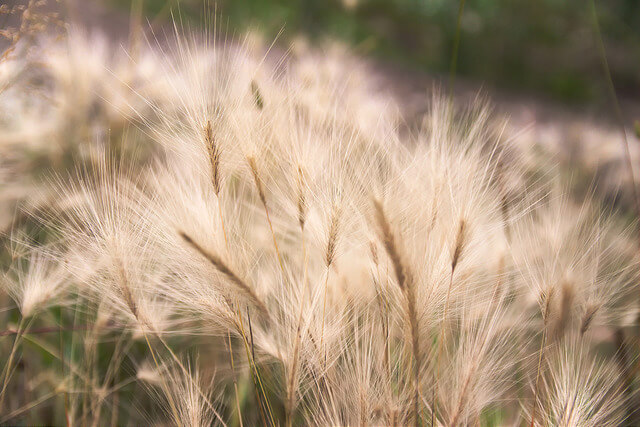Pixie, a 4 year old female mixed breed dog, was brought in by her owner for continuous violent sneezing since going on a walk earlier that day. On presentation, she was sneezing with no nasal discharge and pawing at her face with her right front foot. Upon further questioning, the owner had taken Pixie on a walk down a dirt trail and had let her off the leash for about 10 minutes. She started sneezing and pawing at her face after running out from some bushes. The owner did not notice anything on her face or nose at that time. Due to the classic history, it was determined that Pixie had most likely inhaled a foreign body such as a plant awn (seed) or foxtail.
Pixie was then heavily sedated to allow an otoscope (ear cone) to be placed up her nostril to look around for a foreign body. Luckily, I found a long thin grass seed in her right nostril and was able to remove it with alligator forceps. There was nothing found in her left nostril. Pixie recovered well and had a few more sneezes later that day but by the next day was 100% normal again. Dogs explore the world with their nose and are constantly sniffing the ground and air. The nasal cavity is filled with turbinates, a spiraling labyrinth of pathways. It can be very challenging to find a small or thin foreign body in this sea of pink membranes.
Southern California is full of foxtails and grass seeds during the spring and summer months. We see these pesky foreign bodies causing a lot of trouble for our dogs. We often see them lodged in the ears and even under the eyelids. Due to their sharp one way barbs, they often make their way in between the toes of dogs and cause a penetrating wound that leads to infection. Sometimes we will have to sedate dogs to try to remove the foxtails from under the skin of the feet and toes.
Last summer, I saw a dog who had been running off leash in a field and came back to his owner gagging, retching, and swallowing hard. This dog had at least 50 pieces of sharp pokey plant material stuck in the soft tissues of his mouth, tongue, and gums. I had to anesthetize him to remove them all. They were found as far back as his tonsils!
The best advice we have for dog owners in this area is to keep your dogs on a leash when walking on trails in the spring and summer. Steer clear of tall grasses with long seeds (see image of Mexican feather grass) and dried weeds with foxtails. Inspect your dog’s coat after hikes and remove any plant material found before it has a chance to penetrate the skin. Seek urgent veterinary care for your dog if he/she starts sneezing acutely, shaking the head, or squinting the eye(s) after being outside.
Suggested Articles:

